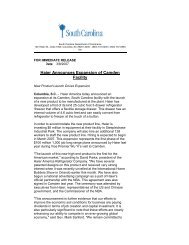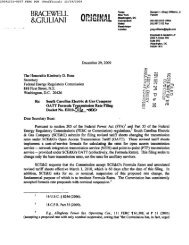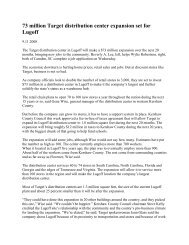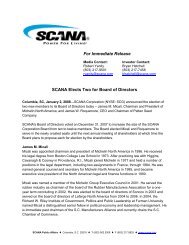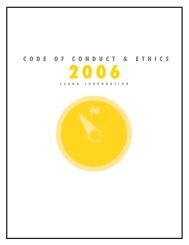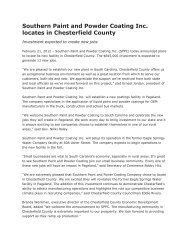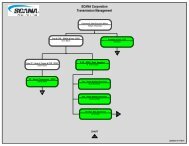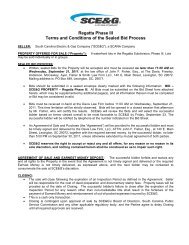Summer 2007 - SCANA Corporation
Summer 2007 - SCANA Corporation
Summer 2007 - SCANA Corporation
You also want an ePaper? Increase the reach of your titles
YUMPU automatically turns print PDFs into web optimized ePapers that Google loves.
Volunteers pay<br />
to spend a week<br />
excavating at the<br />
Topper site each<br />
summer, either<br />
camping or staying<br />
in nearby motels.<br />
hindered any important discovery, but it made for<br />
grueling labor. With a contribution <strong>SCANA</strong> made<br />
through the Southern Carolina Regional Development<br />
Alliance, Goodyear and his team were able to erect a<br />
shelter over the dig, providing much needed relief for<br />
the archaeologists and important protection for the<br />
dig itself.<br />
“It’s an impressive shelter,” Goodyear said. “Along<br />
with a viewing deck that Clariant employees built on<br />
their lunch hours, it provides a way for people to see<br />
the work as it happens without injuring themselves or<br />
damaging the dirt around the dig. Most important is<br />
that it stands over what may<br />
be the most significant earlyman<br />
dig in America.”<br />
The shelter is sturdy and<br />
stands 50 feet by 70 feet. “It<br />
more than covers the footprint<br />
of our dig,” said Bob Cole,<br />
an avocational archaeologist<br />
who has been with Goodyear<br />
since the discovery of the<br />
Topper site. “We dug about 30<br />
centimeters below the Clovis<br />
level and came upon a feature<br />
that looked distinctly non-<br />
Clovis,” he said.<br />
Cole said the heat on those<br />
first digs was merciless. “The<br />
sun was brutal. It felt like<br />
it was 120 degrees, and we<br />
didn’t have any cover.” The<br />
team was easily dehydrated,<br />
drenched in perspiration, and<br />
the no-see-ums were so thick<br />
and aggressive that you could<br />
actually see them.<br />
The shelter also performs<br />
a function just as important<br />
as protecting the excavators<br />
— it protects the site itself.<br />
The pre-Clovis artifacts are<br />
about four meters below the<br />
surface. “When it would rain,”<br />
Goodyear said, “the runoff<br />
would wash leaves and plastic<br />
and other trash into the site.”<br />
Danny Black, executive<br />
director of the Southern Carolina Regional Development<br />
Alliance, said the Topper discovery provides the region<br />
with the prospect of tourism in the future. “From our<br />
standpoint, having this site with its potential impact<br />
on history has huge possibilities, from public tours to<br />
museum exhibits of the artifacts.”<br />
Goodyear said it is clear that people who came to<br />
this site, Clovis and those before, came there to quarry<br />
the rock. “They used it to make microlithic tools, that is<br />
tools to make other tools out of bone or wood or antlers.<br />
These people may have stayed for days or weeks at a<br />
time,” he said.<br />
These men and women from prehistory are<br />
somewhat like Goodyear’s band of volunteers who<br />
SUMMER <strong>2007</strong> • INSIGHTS 23



